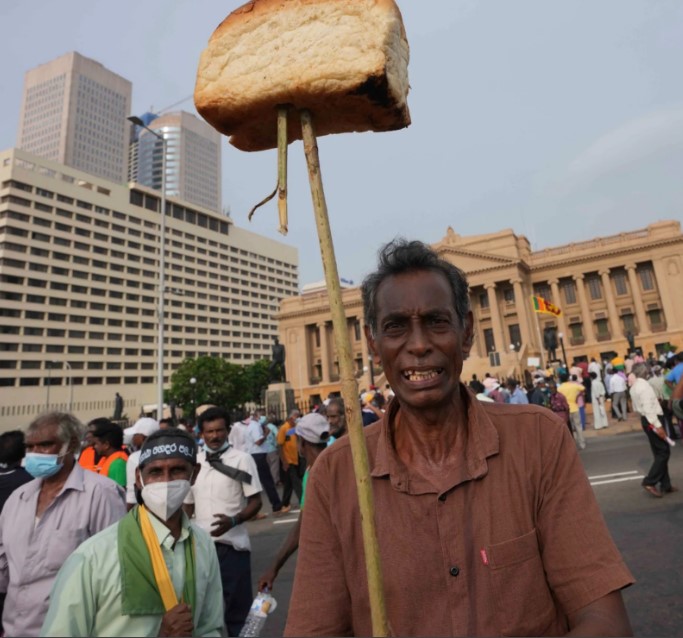Virendra Pandit
New Delhi: The economy of cash-strapped Sri Lanka, which defaulted on its external debt in April amid its worst financial crisis, is now coming to a grinding halt as the island country is running out of fuel for transport and there is no sign of how and from where fresh supplies would come in.
The nearly bankrupt country, with an acute foreign currency crisis that resulted in foreign debt default, announced in April that it is suspending nearly USD 7 billion foreign debt repayment due for this year, out of USD 25 billion due until 2026. Sri Lanka’s total foreign debt stands at USD 51 billion.
The Sri Lankan citizens are grappling with severe shortages of food, fuel, cooking gas, electricity, medicines, and other essential commodities since the crisis began in March. In view of the looming food crisis, the government has asked the people to grow vegetables and food items in their backyards and other spaces.
At present, Sri Lanka can supply only 3,000 metric tons (MT) of diesel instead of the 5,000 MT required and 2,600 MT of petrol, instead of 3,400 MT.
Over the next six months, Colombo will need about USD 6 billion in aid from the International Monetary Fund (IMF) and countries, including India and China, to tide over the crisis, Prime Minister Ranil Wickremesinghe said, as his officials tried to fast-track bailout talks with the IMF to get other fresh funding.
From June 17, the government has already declared Friday a holiday for three months for public offices and schools to curtail vehicular movement. The move left many roads in and around Colombo deserted, the media reported.
An autorickshaw driver, waiting in several miles-long serpentine queues to get a refill, died this week, while many people suffered for hours at some of the fuel stations still functioning.
Sri Lanka Minister of Power and Energy Kanchana Wijesekera said on Thursday that with fuel suppliers waiting for outstanding payments, the state-run Ceylon Petroleum Corporation has not received tenders for fresh stocks.
Colombo is trying to get supplies from multiple sources, including Russia, and awaiting a fresh USD 500 million credit line from India for fuel imports for the next four months.
Sri Lanka’s economic meltdown, the worst since its independence from the British in February 1948, began when the country’s tourism sector collapsed because of the pandemic-related lockdowns in 2020. Then, its expatriates, who lost jobs overseas, could not repatriate money. Drying of these two main sources of foreign exchange—tourism and repatriation of funds—plummeted the nation’s economy by the end of 2021.
As it had little foreign exchange, Sri Lanka could not import fuel or food. Shortages triggered weeks of unprecedented protests and violence, which started in March this year and led to the ouster of Prime Minister Mahinda Rajapakse. The protesters also sought the exit of President Gotabaya and his other family members from the government.
They have blamed the Rajapakse clan for decisions leading to severe shortages of everything from fuel to medicine, inflation at nearly 40 percent, daily power outages for up to 14 hours, and historic debt default.
In the first quarter of this year, Sri Lanka’s economy contracted because of public protests, political instability, high commodity prices, and supply chain bottlenecks. Experts are afraid a recession this year will be unavoidable.
The country is experiencing long queues for refueling at pumping stations as the government finds it difficult to finance fuel imports to retain a reserve adequate for a minimum of three months.
A move to ration fuel is to be implemented from next month as the forex crisis gets worsened.

